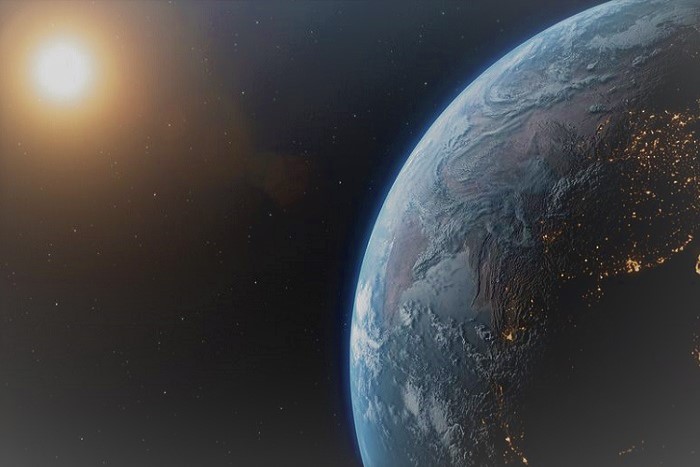
They say that a real scientist cannot believe in God, while a true believer cannot do science. Why?
People who say so demonstrate their lack of understanding of both faith and science. They think that if a scientist believes in God, his religion makes him refuse approved scientific methods. Apparently, they also think that a real scientist believes that only the phenomena that are described by science exist; if God isn’t described by science, then He doesn’t exist.
That’s a misconception. In fact, science and faith talk about different things. All conflicts between them are mere misunderstandings where either believers don’t fully understand the core message of their faith or scientists try to explore things that don’t belong to their field of study. For instance, when the Catholic Church condemned Copernicus’s heliocentric theory, the Church was wrong. The fact that one celestial body rotates around another celestial body doesn’t have anything to do with Christian doctrine. It deals with the structure of our world, and not with God, the soul, or angels… Here is another example: some scientists in the 19th century claimed that it wasn’t God who created man; rather, human beings originated from an ancient ape independently, without God’s help. They based their claims on the theory of evolution. They were wrong because science can speak only of the origin of human species, that is, how human body turned in what it is now thanks to evolution. However, science cannot say anything about the soul and God’s image in us humans because it is out of its domain.
Well, and if we digress from abstract arguments and look at some real-life examples, we find plenty of cases where scientists – even great scientists – were staunch believers. Nicolaus Copernicus who put forward the heliocentric theory was not just a Christian but also a priest! Isaac Newton, the famous English mathematician and physicist, was also a theologian and wrote treatises on theology. There are quite a few believers among scientists even today. Their faith doesn’t hinder their scientific research.

Does science tell us what the world is made of?
We have to turn to the definition of science. Science includes not only certain facts but also methods, which scientists use to learn those facts. Those methods are collectively referred to as scientific methodology. For example, scientists check the results of all research and redo the same experiments all over again; they don’t trust anyone’s word and search evidence for all claims. When they postulate a theory, they aim to be aware of the facts that could prove it wrong, and if such facts emerge, they know that they have to discard that theory. They know that they must not falsify their experiments. They know that they mustn’t disregard uncomfortable facts or be afraid of uncomfortable questions, and a whole lot more.
Aside from that, real science never claims to describe the whole world “as it is”. Scientists observe nature, perform experiments, make sense of the results and put forward possible explanations of those results. Explanations like those are called hypotheses. They are scrupulously tested and tried. Scientists ask the following questions: Do our findings explain all observed facts? Can we explain other phenomena, which haven’t been discovered yet, with those hypotheses? If yes, if the hypotheses provide a clear explanation to the facts that we have and predict phenomena that haven’t been discovered yet, those hypotheses are called theories. A theory is merely a model of the reality. It explains what we already know and has practical use (e. g., you can use theory of electricity to develop various electrical and electronic devices, from a light bulb to a computer). And yet, no conscientious scientist will say that an accepted theory is the ultimate truth and that the reality is the same as the theory postulates it to be.

Take, for instance, Copernicus’s heliocentric theory. In spite of dissatisfaction of the Catholic Church, his theory was quickly adopted because it had practical use. It allowed people to perform quicker and more accurate astronomical calculations, which were immensely important for seafarers. A hundred years later, in the 17th century, Copernicus’s theory was improved by Johannes Kepler, who made it even simpler and more precise. Later, when Isaac Newton discovered the law of gravity, people finally realized why the planets had the specific trajectories of rotation around the Sun. It was only in the 20th century – the age of space exploration – when people were finally convinced that the theory of Copernicus was more than just a useful mathematical model: the Solar System indeed works as Copernicus predicted.
The same holds true for any other theory in any other scientific field. A scientific theory describes a model of reality, not the reality itself. It isn’t clear instantly whether that model is correct or not. For example, 19th-century physicists used to think that space was permeated by invisible matter called “ether”. It was an accepted theory, which people used to explain results of various experiments and astronomical observations. Thanks to Albert Einstein, the ether theory was repudiated in the early 20th century because his theory of relativity was able to explain the observed facts better than ether. It turns out that educated people used to believe in the existence of ether for decades. They thought that it was the way the world actually worked. In fact, they were wrong because science was incorrect. We may conclude that there are many scientific theories nowadays, which will be revised in the future, so you shouldn’t believe that the modern science has been able to describe the world precisely as it really is.



